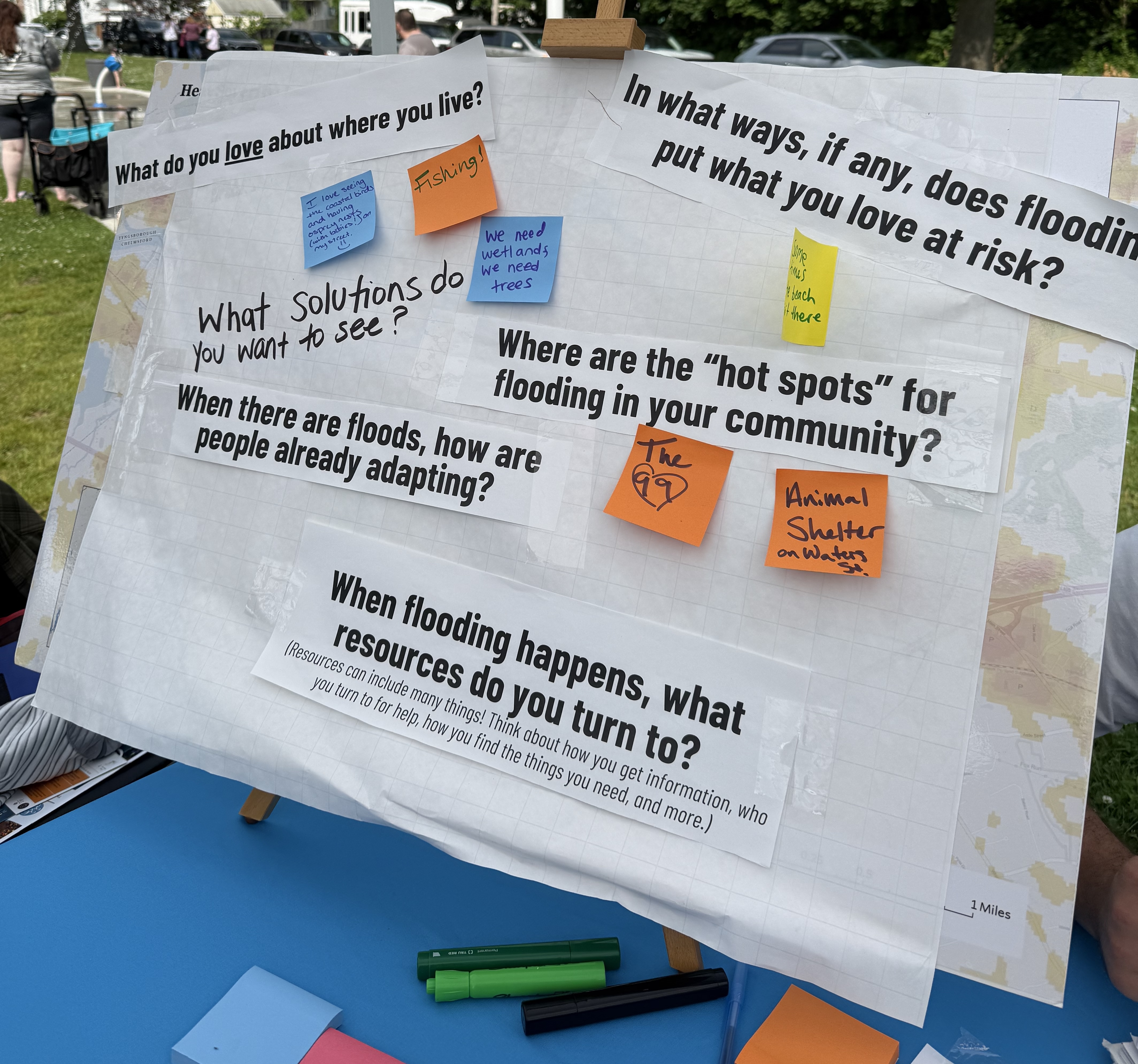Proactive Relocation Away from Rising Waters
TNC is thoughtfully exploring how to help communities at the forefront of flood risk along the Massachusetts coast
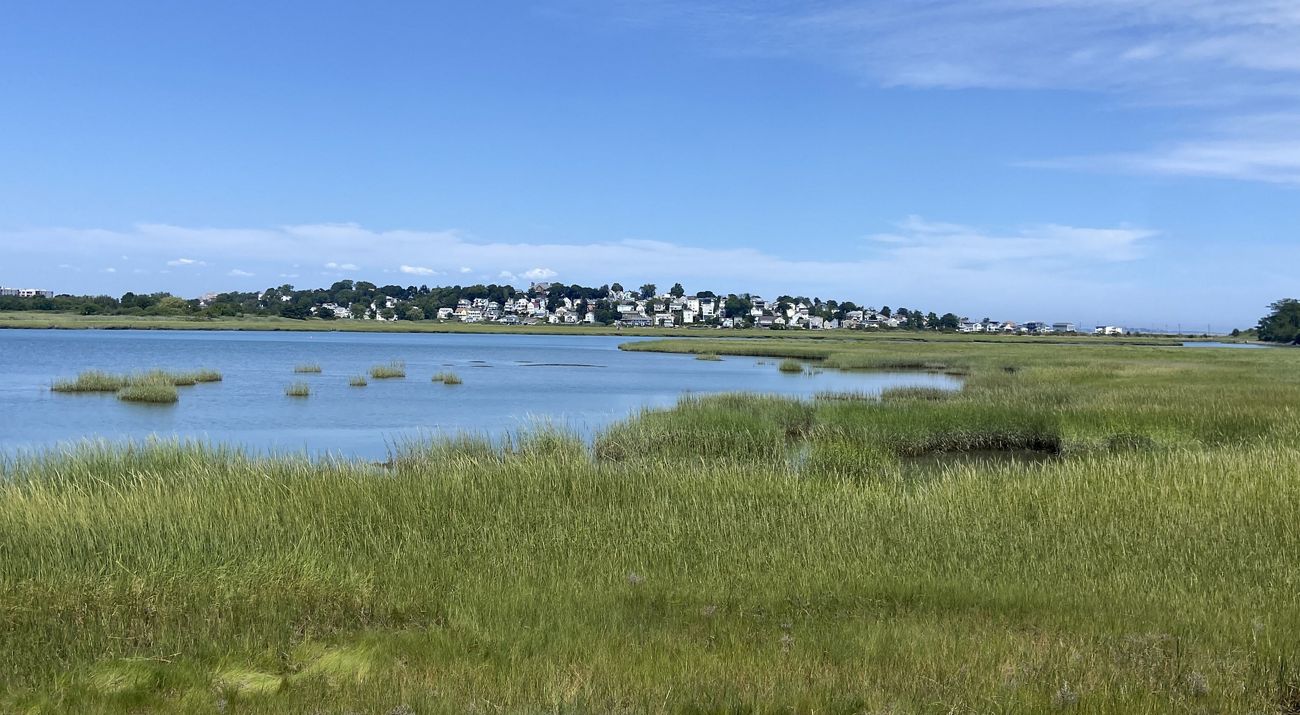
Several years ago, Nature Conservancy in Massachusetts Climate Adaptation Director Emma Gildesgame was standing next to a marsh in Winthrop, talking about flood hazards in the neighborhood. She was with staff from the town, colleagues from partner nonprofits and consultants, who had all been working together on projects to increase resiliency for the people living along the shoreline.
The discussion focused on whether the projects could handle predicted flood levels for 2050—let alone 2070, as levels are projected to increase over time—and Gildesgame posed the question that started it all.
“Is anyone thinking or talking about helping people move out of harm’s way for a more long-term solution to the expected flooding?”
The answer from municipal staff? “We can’t talk about that.” That kind of action was too complicated, political and expensive, and just not an option that was “worth” discussing at the time.
Gildesgame asked if it would be helpful for TNC to start talking about it, laying the groundwork to help people come to terms with a future in which coastal residents and those in other flood-prone areas will need to relocate further away from these areas. The answer was yes.
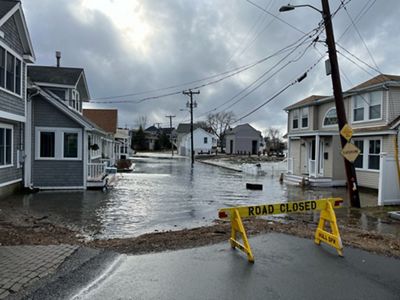
Fast forward a few years to May 2025, and Gildesgame is back in Winthrop, this time hosting a community engagement session with 25 people who specifically came to talk about managed retreat, including their potential interest in property buyouts. The residents discussed concerns and their experiences, as well as what they’d want for their community after potential retreat and relocation.
“Now, Winthrop is poised to be one of the most accepting and interested communities that I’m speaking to about the potential of planning for managed retreat,” says Gildesgame.
The Nature of Resilience Around the World
10 communities finding ways to thrive in a changing climate
Read MoreThe community meeting is part of an initiative TNC has been building for the last few years, with partners at the Urban Harbors Institute at the University of Massachusetts Boston, Communities Responding to Extreme Weather (CREW), Carri Hulet of CH Consulting, and UMass Amherst Extension. Together, they’ve engaged with experts in the field and convened practitioners to understand the barriers to thinking about and planning for relocation away from the edge of the coast as a long-term climate resilience solution.
In fall 2024, the group was awarded a grant from the Massachusetts Office of Coastal Zone Management (CZM) to further this work through a coast-wide peer learning network, public community listening events and the development of a resource database.
What is managed retreat?
There are several terms that are all used to describe the action of moving people, homes and infrastructure away from high-flood-risk areas. We are using managed retreat throughout this page, but it may also referred to as coastal relocation, climate migration, community relocation, planned relocation and other related terms. Managed retreat is the most used amongst practitioners, with the recognition that this term—and perhaps none of the terms—are perfect. Most important is considering the context in which the terms are being used.


Want more stories like this?
Sign up for our monthly e-newsletter to get the latest stories, news and updates right to your inbox!
Adapting to Rising Waters
Managed retreat is one tool in the toolbox for adapting to flooding effectively for the short- and long-term. Unlike a lot of the other tools that we think about, like living shorelines, sea walls and temporary storm barriers, managed retreat eliminates risk for those who move to safer homes out of the floodplain. The other tools can be useful in the short term, but strategies for buyouts and rezoning—as well as moving structures and realigning utilities, roadways and transit—are needed for the areas that are most frequently and intensely flooded.
“People need help now, and we also need to be thinking about places where it won’t be safe to live, work and play 10, 50 or 100 years down the line. Flooding is here, it’s bad, and the status quo is not an option—we need solutions,” says Gildesgame. “It’s hard. We’re talking about fundamentally reshaping our relationship to our coasts, places in which community identities are deeply rooted. Moving can be hard on many levels; getting flooded out of your home can be even harder."
Most towns have a relatively small percentage of these highest-risk homes that would benefit from a buyout. But in a state with a housing crisis, we need to think carefully about how to help people move out of high flood risk homes. And we need to help make it possible for those who want to stay in their communities—near their social, financial and other support systems—find equivalent, affordable housing in safer areas.
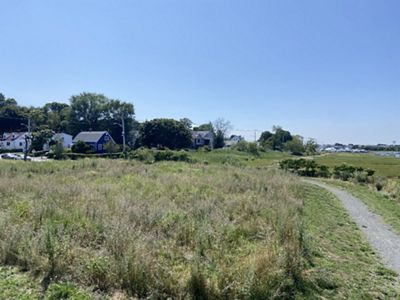
An Opportunity for Restoration
During discussions with communities about managed retreat, residents often bring up the concern that new development will happen post-retreat. There’s also a misconception that the properties will turn into a “wasteland” if structures are removed. This highlights how important it is for practitioners and towns to be thoughtful about the actions taken after homes and infrastructure are relocated.
With proactive planning, relocation can also help coastal habitats like salt marshes and sand dunes adapt to rising seas and increasingly intense coastal storms. Restoring the area to natural shoreline that supports wildlife, can absorb flooding and rising seas, and serve as a green space for the community ensures the land continues to be an asset to those still nearby.
A participant in a managed retreat community discussion in Gloucester agreed: "A nature-based solution would be great... people would like that if they knew they were creating open space."
Taking all these considerations into account requires working across many traditional disciplines: conservation, housing and transit advocates, utilities, community planners, and more. Together, we can create proactive plans that help solve all these challenges—and that’s where collaboration comes in.
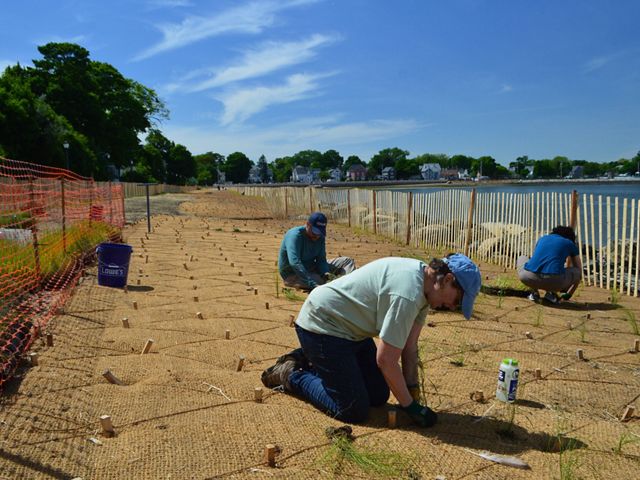
Working With Nature
One great nature-based solution to coastal challenges like flooding, sea level rise and erosion, is the use of living shorelines. Vegetation or other living elements like oyster reefs can be implemented alone or in combination with hard substances like rocks to create structures that enhance and protect the coastline. In some cases, this type of solution can be an intermediate step for coastal communities to buy time while they plan for eventual relocation.
Learn more about how we're piloting living shorelines in New England
Conversations with Communities
Throughout spring and summer 2025, the Proactive Coastal Relocation team held community sessions in coastal and flood-prone towns in eastern Massachusetts to start the conversation about building resilience and to get input on the idea of relocation.
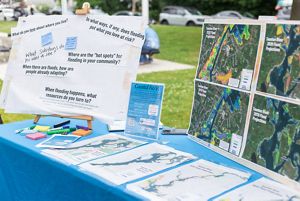
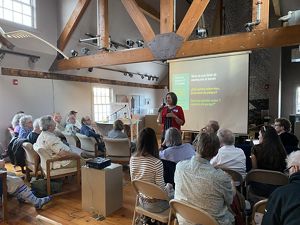
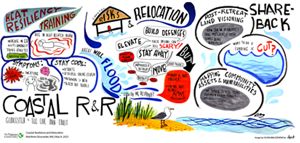
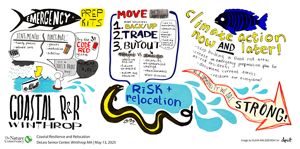
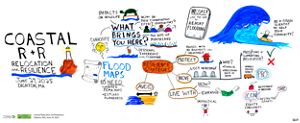

Taunton: TNC table at the 2025 Taunton River Festival in MA, sharing information on flooding and starting conversations with community members about resilience and relocation. © Hayley McManus

Gloucester Community Session: Community members gather in Gloucester in summer 2025 to talk about coastal resilience and relocation as part of the efforts of the Proactive Coastal Relocation Network. © Andrew Laquerre

Gloucester: Visual representation of some of the topics and ideas that came up at a "Coastal Resilience and Relocation" community session in Gloucester in summer 2025. © Olivia Maliszewski for Dpict

Winthrop: Visual representation of some of the topics and ideas that came up at a "Coastal Resilience and Relocation" community session in Winthrop in summer 2025. © Olivia Maliszewski for Dpict

Dighton: Visual representation of some of the topics and ideas that came up at a "Coastal Resilience and Relocation" community session in Dighton in summer 2025. © Andy Goulet for Dpict
A More Resilient Massachusetts Coast
Gildesgame and project partners are helping communities to start thinking about relocation as an option for some residents in the neighborhood. Through outreach and engagement with coastal residents, like the community gathering in Winthrop, they aim to share information about how people around the country are dealing with similar situations, as well as when and how others have decided whether and when to leave or stay in place.
They are also creating opportunities for those facing extreme flooding to express their concerns, articulate their hopes for the future and ask questions about the difficult choices before them. Following these engagements, the team produced a community perspectives report to share these insights.
The creation of this report is one part of the CZM grant for this work. The grant also supports building a knowledge hub for accessing articles, white papers, guides, audio and video resources, and other media about making informed decisions, communicating clearly and taking action to reduce coastal flood hazards; as well as a professional network comprised of those working on proactive relocation planning.
In June 2025, this Proactive Coastal Relocation Network came together for the first time for a day-long workshop to discuss challenges, effective approaches and how they can support one another. The workshop will be held again in summer 2026.
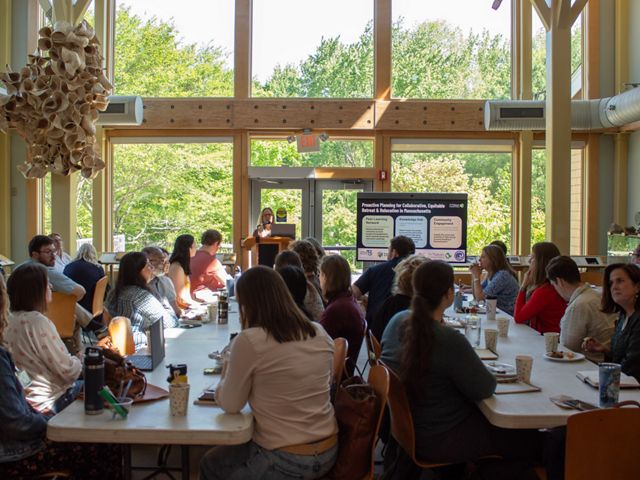
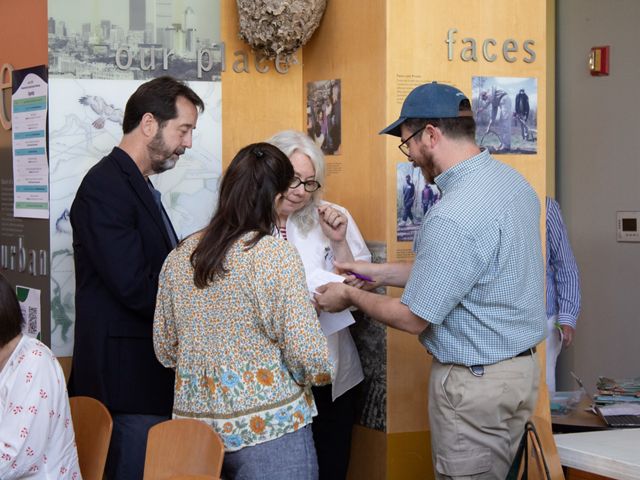
There is also broad recognition across Massachusetts state agencies and practitioners that sea level rise is coming, storm surge is here and coastal flooding is happening with regularity—we’re seeing it all now. CZM’s ResilientCoasts initiative draft plan released in spring 2025 recognizes that the state has an important role to play in supporting coastal municipalities and residents in planning for a range of adaptive measures, including managed retreat. And the Massachusetts Emergency Management Agency is conducting a study to explore the feasibility of a state-level buyout and elevations program that could support coastal and riverine cities and towns facing extreme flood impacts.
While so many of us, TNC included, are working to slow climate change, we’re at a point where we need to adapt to the impacts that are already here and those that are imminent. This adaptation will require difficult conversations and decisions, but if we plan ahead and are collaborative and thoughtful about our approach, we can do it in a way that honors communities and their past, present and future.
Quote: Emma Gildesgame
If we get this right—a proactive, equitable, community-centered reenvisioning of what flood-prone areas can look like—we can reduce risks, create more space for functional coastal ecosystems, facilitate marsh migration and meet community needs.
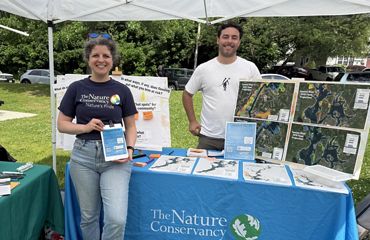
Download
A database of resources to help anyone understand more about managed retreat as a climate adaptation practice. (Updated September 2025)
DownloadResources
-
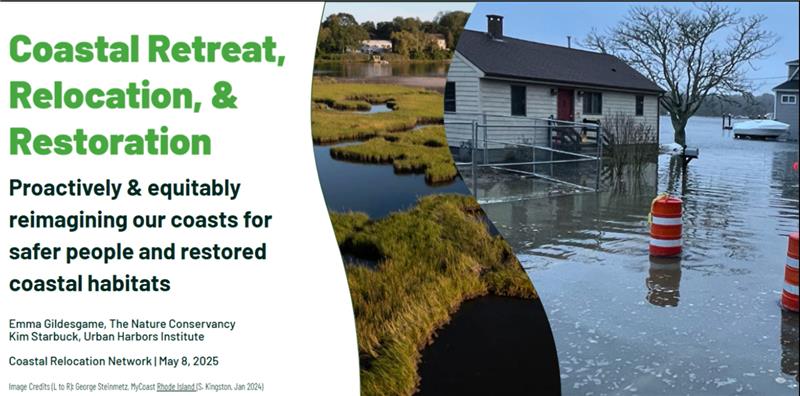
Webinar: Managed Retreat 101
Learn the basics of managed retreat, also known as coastal retreat or relocation. Watch a recording here.
-
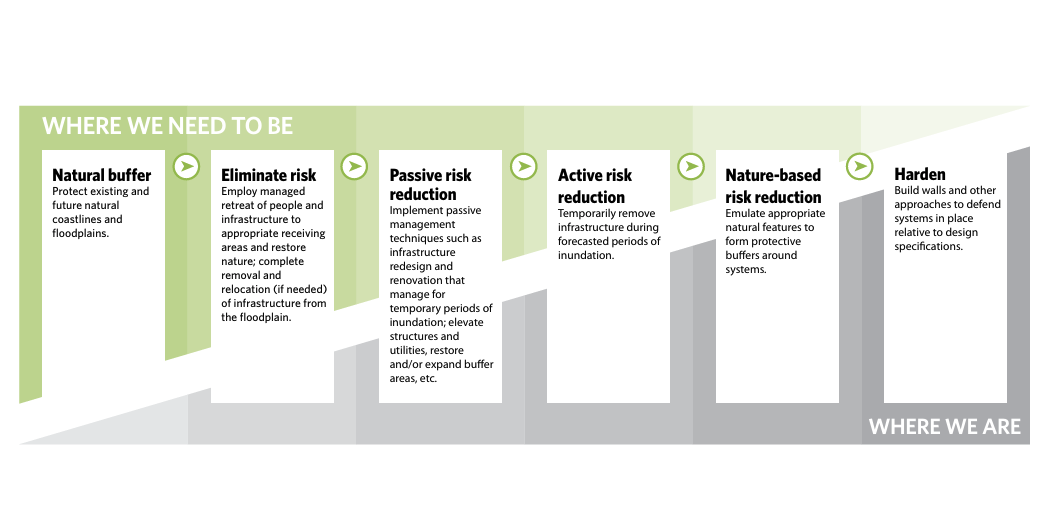
Flood Adaptation Hierarchy
Executive summary of the flood adaptation report below. Dive a little deeper.
-
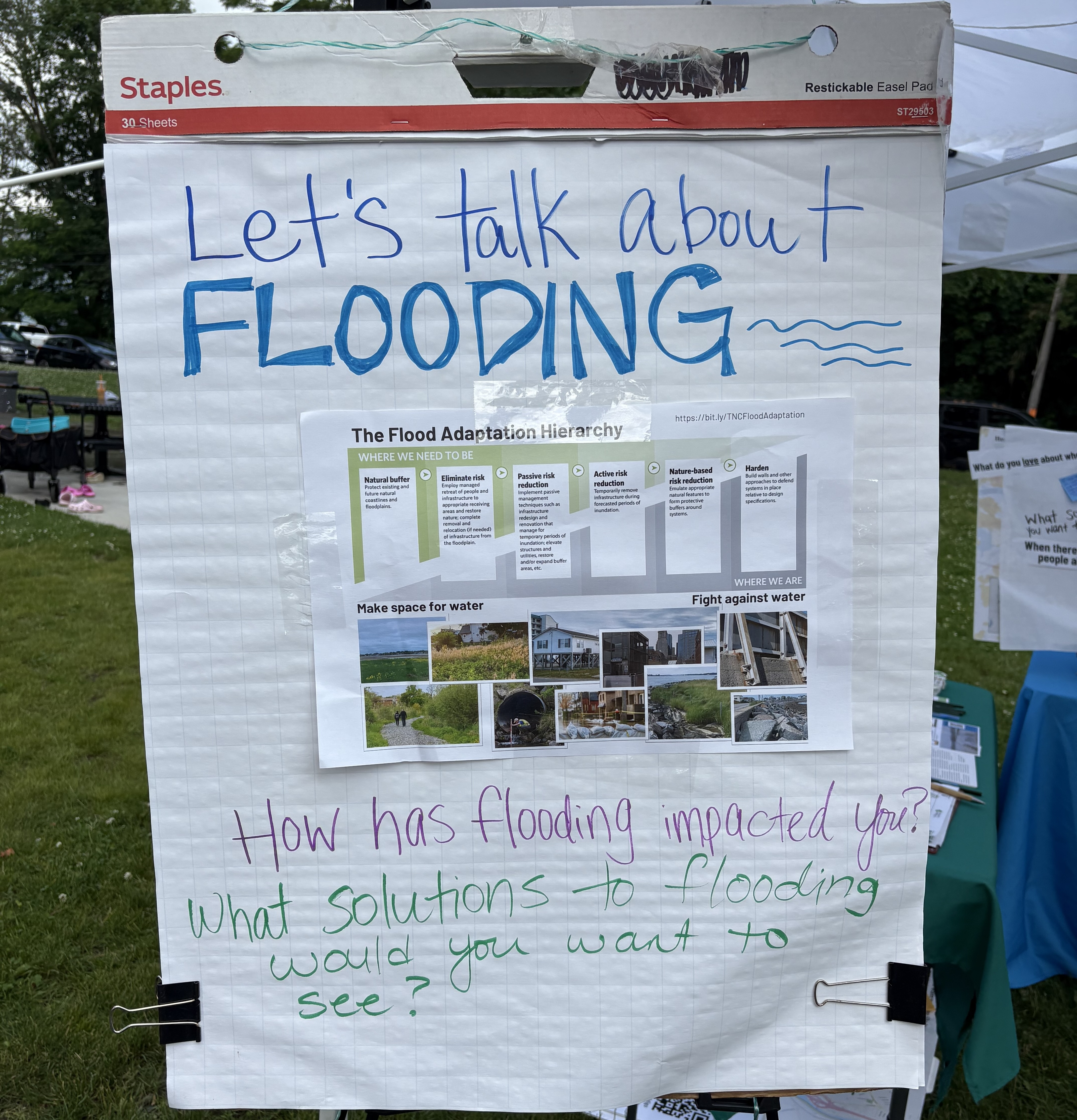
Report: A new framework for flood adaptation
Full report proposing the flood adaptation hierarchy. Read it here.
-
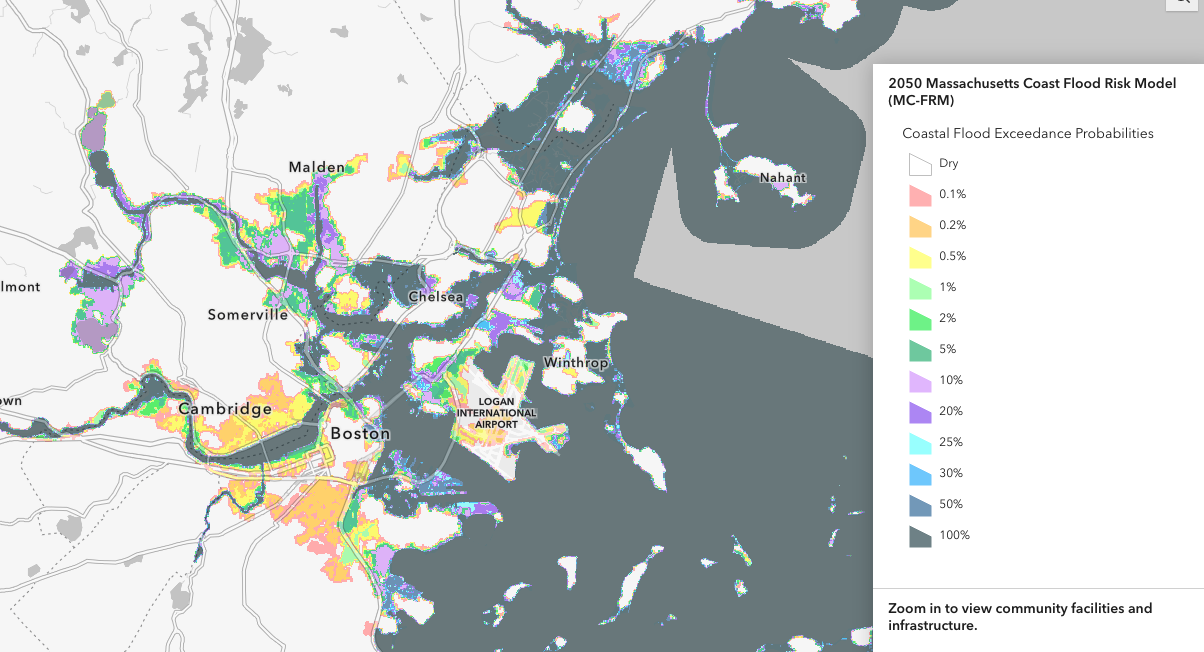
MA Coastal Zone Management Sea Level Rise and Coastal Flooding Viewer
Use this tool to view predicted sea level rise, flooding and other coastal challenges along Massachusetts' shores. Check it out here.
Stay in touch!
Want to keep up to date with the latest on this initiative and more of our work in Massachusetts? Sign up today.

